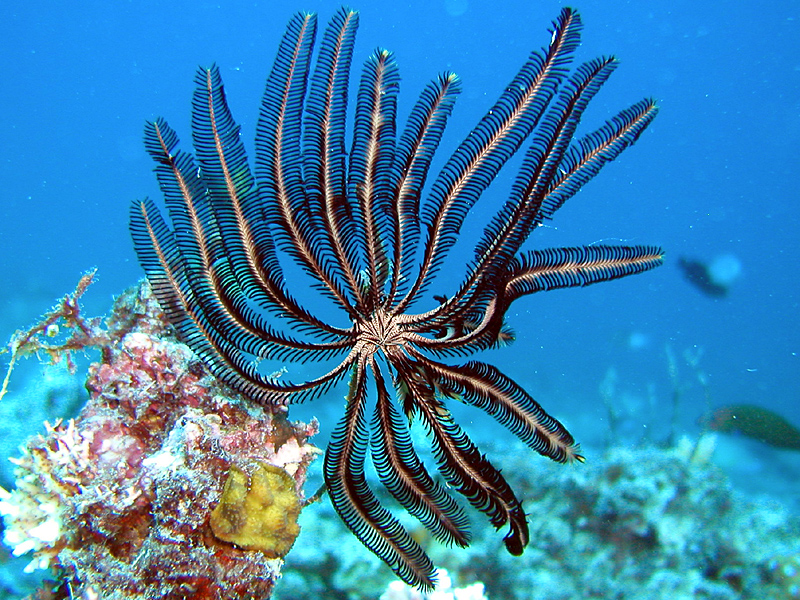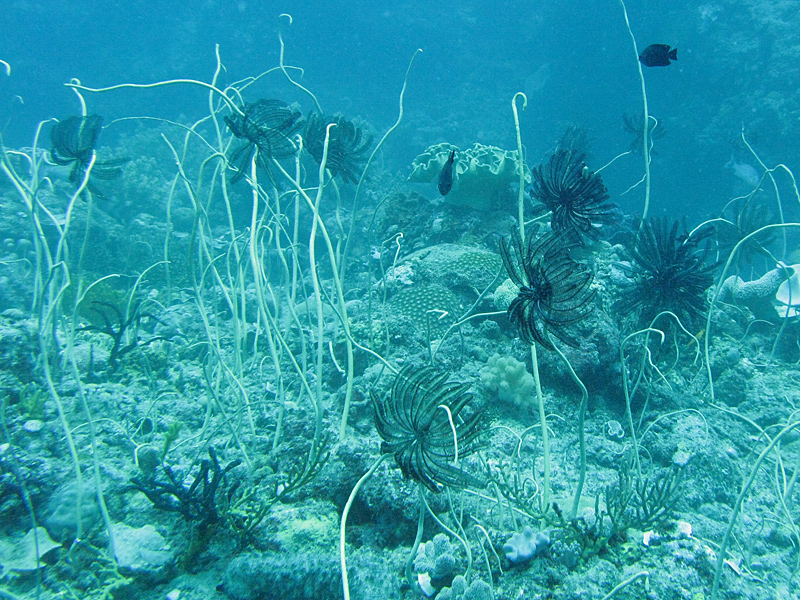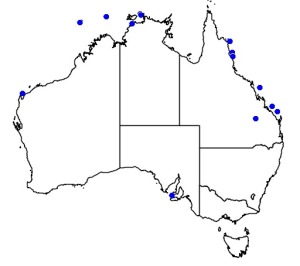�
�
�
���
Cenometra bella
Kingdom
Animalia
Phylum
Echinodermata
Class
Crinoidea
Order
Comatulida
Family
Colobometridae
Genus
Cenometra
Species
Cenometra bella
Colours
Distinguishing features
Exposed with arms in a circular array, usually clinging tightly with its ring of strong cirri to sea whips or other narrow objects. Up to about 40 arms. A wide range of colour varieties. Most have pale brachials (white, grey, cream, pale green or orange/yellow) and darker pinnules (black, black and yellow, maroon with white, some with orange pinnule tips) although some individuals are completely silver/grey.
The second brachial pinnule is much larger than the first and third.
Size
- Size data has not been obtained.
Depth range
- Depth range data is not yet available.
Synonyms
Distribution
Distribution and habitat preferences
Always found clinging to long narrow objects that enable it live well off the bottom, usually sea whips or black coral.
Found mainly on the exposed reef slopes between North Point and South Island, most commonly at North Point and Pidgin Point.
Web resources
References
References that assist with identification
- Clark, A.M. and F.W.E. Rowe (1971). Monograph of shallow-water Indo-west Pacific echinoderms British Museum (Natural History), London.
Other references
- Meyer, D.L. (1979). Length and spacing of the tube feet in crinoids (Echinodermata) and their role in suspension-feeding, Marine Biology, 51: 361-369. LIRS catalog number 29.
- Meyer, D.L. (1985). Evolutionary implications of predation on recent comatulid crinoids from the Great Barrier Reef, Paleobiology, 11(2): 154-164. LIRS catalog number 167.
- View all references









